In a world where our smartphones are lifelines, staying connected is non-negotiable. Imagine being out for the day, capturing incredible moments, but your phone battery is on the brink of dying. This is where rechargeable power banks come into play, revolutionizing our approach to mobile power. No longer do we have to fear losing charge at crucial times; these portable devices ensure that our gadgets stay energized throughout the day.
Rechargeable phone power banks have evolved significantly in recent years, catering to a variety of needs and preferences. Understanding the ins and outs of these devices can elevate your tech experience and make your life considerably more convenient. With options ranging from compact models for on-the-go charging to high-capacity power solutions for long trips, there’s a perfect fit for everyone.
In this article, we will explore everything you need to know about rechargeable power banks, from the essential features to consider when purchasing one, to the comparison of lithium-ion versus Li-Po batteries. We will guide you in selecting the right capacity and emphasize the importance of portability. Furthermore, we will debunk common myths and provide maintenance tips to ensure longevity. Ultimately, this comprehensive guide aims to equip you with the knowledge needed to make an informed decision and embrace the future trends in rechargeable power banks.
Understanding the Basics of Rechargeable Power Banks
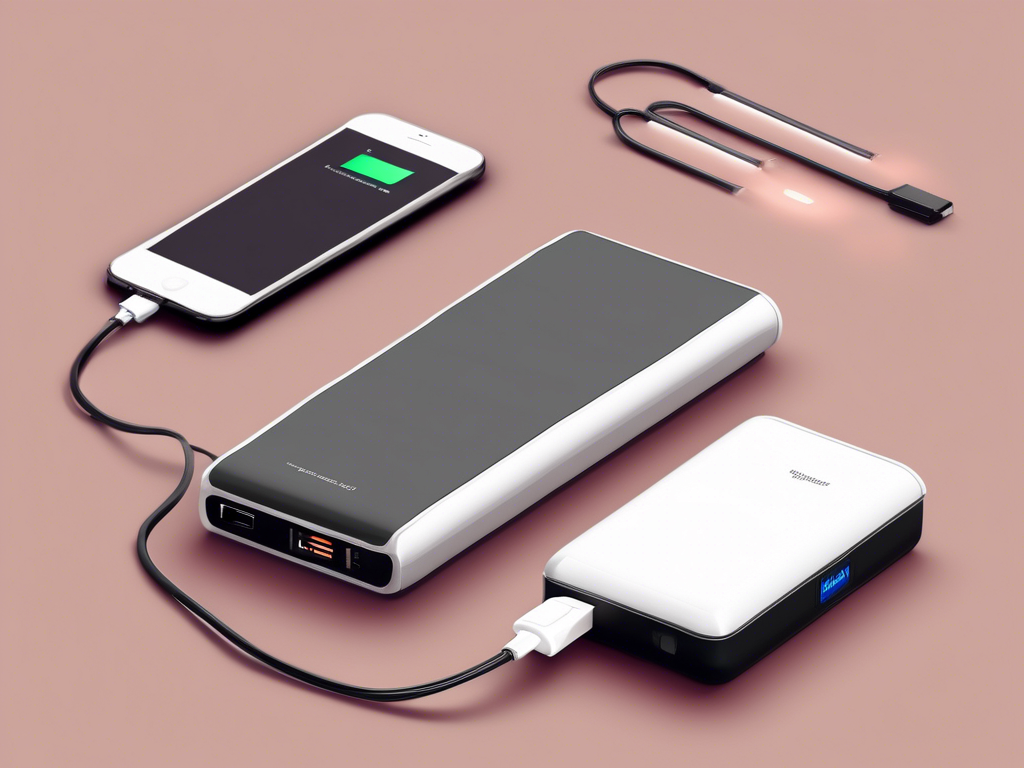
What is a Rechargeable Power Bank?
A rechargeable power bank is a portable battery pack that stores electrical energy, allowing you to charge your devices on the go. These handy gadgets are essential for keeping your smartphone, tablet, or other electronic devices powered up when you’re away from an outlet. Typically, they come equipped with USB ports that facilitate charging multiple devices simultaneously. 📱⚡
How Do Rechargeable Phone Power Banks Work?
Rechargeable phone power banks operate by converting stored energy into electrical power, which is then delivered to your devices through a charging cable. When you charge the power bank, it stores energy in its internal battery, and when you connect your device, it releases that stored energy. Here’s a simplified breakdown of the process:
- Charging the Power Bank: Connect it to a wall charger or USB port.
- Connecting Your Device: Use a suitable charging cable.
- Power Transfer: The power bank supplies energy to your device until it reaches full charge or until the power bank itself runs out of energy.
Key Features to Consider
When shopping for a rechargeable phone power bank, there are several important features to consider:
- Capacity: Measured in milliamp-hours (mAh), higher capacity means more charges for your devices.
- Output Ports: Multiple ports allow for simultaneous charging of several devices.
- Size and Weight: Choose a model that balances capacity with portability.
- Fast Charging Technology: Look for options that support quick charge capabilities for efficient charging.
Pros and Cons of Using Power Banks
Like any technology, rechargeable power banks have their advantages and disadvantages. Understanding these can help you make an informed choice:
Pros:
– Convenient for travel and outdoor activities 🌍
– Allows charging without needing a wall outlet 🚫🔌
– Can charge multiple devices at once
Cons:
– Limited lifespan due to battery degradation over time 💔
– Might be heavy or bulky if high capacity
– Not all power banks support fast charging
Maintaining Your Power Bank
To ensure that your rechargeable phone power bank lasts as long as possible, follow these maintenance tips:
- Avoid exposing it to extreme temperatures—both hot and cold can impact battery performance.
- Charge the power bank periodically even if not in use to maintain battery health.
- Keep it free from dust and moisture.
- Use the right charging cables recommended by the manufacturer.
By understanding the basics of rechargeable power banks, you can choose the right one to keep your devices charged and ready whenever you need them! 🔋✨
Top Features to Look for in a Rechargeable Phone Power Bank
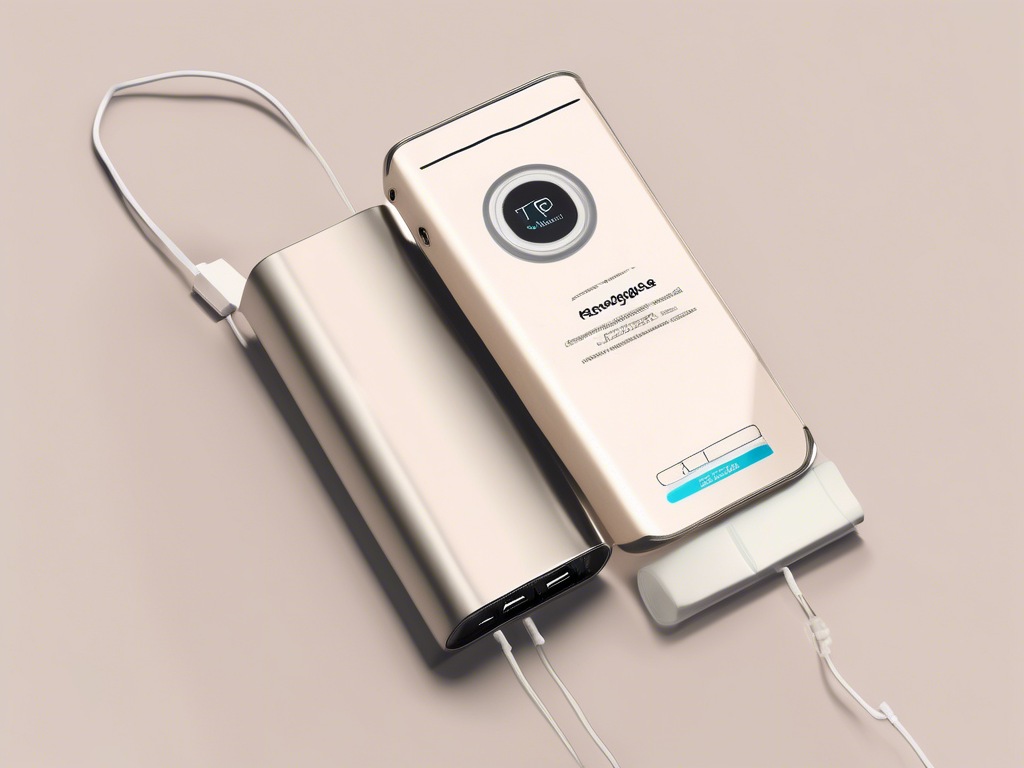
Charging Capacity: How Much Power Do You Need?
When selecting a rechargeable phone power bank, the first feature to consider is its charging capacity, measured in milliamp-hours (mAh). A higher mAh rating means the power bank can store more energy and provide more charges to your devices. For instance, a 10,000mAh power bank can typically charge an average smartphone about two to three times before needing to be recharged itself. Therefore, consider your daily charging needs and choose a capacity that aligns with your usage habits. 🔋
Output Ports: Charging Multiple Devices
Another essential feature is the number of output ports. If you often find yourself needing to charge more than one device simultaneously, opt for a rechargeable phone power bank with multiple USB ports. This allows you to charge your phone while also powering up other devices like tablets or wireless earbuds at the same time. Some power banks even support different charging speeds across ports, ensuring that each connected device receives optimal power. ⚡📱
Fast Charging Technology: Speed Matters!
In today’s fast-paced world, time is precious, and fast charging technology can make all the difference. Look for a power bank that supports fast charging—commonly referred to as Quick Charge or Power Delivery. This feature allows your devices to charge much quicker than standard charging, making it ideal for busy individuals on the go. Check for compatibility with your devices to maximize efficiency! ⏩
Size and Portability: Take It Anywhere!
The size and weight of a rechargeable phone power bank are crucial considerations, especially if you plan to carry it around frequently. Lightweight and compact models are generally easier to transport, fitting seamlessly into bags or pockets without adding bulk. However, remember that a larger capacity often results in a heavier power bank. Strive to find a balance between capacity and portability that suits your lifestyle. 🌍💼
Safety Features: Protect Your Devices
Safety should never be overlooked when choosing a rechargeable power bank. Look for features such as overcharge protection, short-circuit prevention, and temperature control. These safety measures help ensure that your devices are charged safely and that the power bank itself does not become a hazard. Investing in a high-quality power bank with robust safety features can prolong the life of both the power bank and your devices. 🔒✨
Brand Reputation and Warranty: Trust Matters!
Lastly, consider the brand reputation of the rechargeable phone power bank you are looking to purchase. Established brands usually provide reliable products and good customer service. Additionally, check if the manufacturer offers a warranty; this can be a strong indicator of the product’s quality and longevity. It’s always wise to read reviews and do some research before making a final decision. 🛡️🌟
By focusing on these key features, you’ll be well-equipped to choose the perfect rechargeable phone power bank that meets your charging needs!
Comparative Guide: Lithium-ion vs. Li-Po in Power Banks
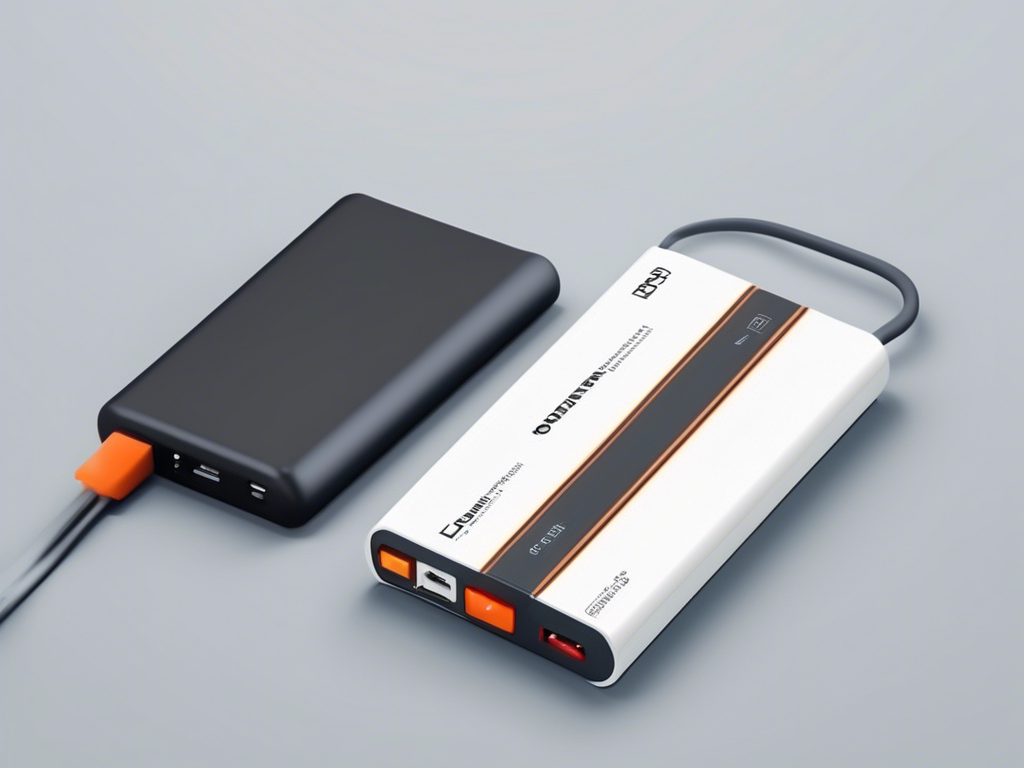
Understanding Lithium-ion Batteries
Lithium-ion (Li-ion) batteries are the most common type found in rechargeable power banks. They are known for their high energy density, allowing them to store a significant amount of energy in a relatively small size. This makes them a popular choice for rechargeable phone power banks, as they can provide multiple charges without making the device overly bulky. Additionally, Li-ion batteries have a longer lifespan and exceptional performance in various temperature ranges, making them suitable for daily use. 🔋✨
Exploring Lithium Polymer Batteries
Lithium Polymer (Li-Po) batteries, on the other hand, offer unique advantages that can be advantageous in specific scenarios. They tend to be lighter and can be made in various shapes and sizes, allowing for more compact designs in rechargeable power banks. This flexibility can lead to slimmer devices that fit easily into pockets or bags. However, Li-Po batteries typically have a lower energy density than Li-ion batteries, meaning they might not provide as many charges for your smartphone. ⚖️📱
Comparing Lifespan and Durability
When considering the longevity of a rechargeable power bank, both battery types have pros and cons. Lithium-ion batteries usually have a lifespan of around 500 to 1000 charge cycles before their capacity significantly degrades. In contrast, Lithium Polymer batteries can offer a slightly shorter lifespan due to their construction. However, Li-Po batteries are less prone to leaking and may be safer to use in some situations. It’s essential to evaluate your charging habits to decide which battery type will serve you better over time. ⏳🔄
Cost Considerations
Price is always an important factor when selecting a rechargeable phone power bank. Generally, lithium-ion batteries are more affordable and widely available, making power banks featuring them more budget-friendly. Conversely, because of their advanced design and benefits, power banks with Lithium Polymer batteries often come at a higher price point. If you’re looking for a rechargeable power bank that balances cost and functionality, consider your budget as well as your charging needs. 💰🔌
Choosing the Right Battery for Your Needs
Your choice between Lithium-ion and Lithium Polymer batteries in rechargeable power banks should ultimately depend on your individual needs. Here are some considerations to help you make an informed decision:
- Portability: Opt for Li-Po if you prioritize a lightweight, slim design.
- Charging Capacity: Choose Li-ion if you need more frequent charges and higher energy density.
- Budget: Select Li-ion for a more affordable option without compromising too much on quality.
- Durability and Safety: Li-Po may offer better safety in specific scenarios but research brand reputation for reliability.
By weighing these factors, you can select the perfect power bank tailored to your lifestyle and charging requirements! ⚡🔋
How to Choose the Right Capacity for Your Needs

Assessing Your Daily Device Usage
Before selecting a rechargeable phone power bank, it’s critical to analyze your everyday device usage. Consider how often you charge your devices and their battery capacities. For instance, if you frequently use a smartphone with a 3,000mAh battery, a power bank with at least 6,000mAh would typically allow for two full charges. This assessment helps you match the power bank’s capacity to your requirements effectively. 📊🔌
Determining Your Travel Habits
Your travel habits play a significant role in choosing the right power bank capacity. If you travel extensively or spend long hours away from outlets, opt for a higher capacity power bank. A **10,000mAh** or **20,000mAh** power bank can keep multiple devices charged during extended trips. Conversely, if your outings are short and you’re near power sources, a compact **5,000mAh** option may suffice, enhancing portability without sacrificing convenience. 🧳✈️
Prioritizing Compatibility with Multiple Devices
If you have several devices to charge, such as a tablet and a smartwatch along with your phone, it’s vital to choose a rechargeable phone power bank that offers sufficient capacity and multiple ports. Look for a model with at least **15,000mAh** to accommodate varied charging needs. This way, you ensure all your devices can receive adequate power, so you’re never left unplugged! ⚡📱
Understanding How mAh Affects Charging Cycles
The milliamp-hour (mAh) rating directly influences how many times you can charge your devices before the power bank itself needs to be recharged. Here’s a quick guide based on average smartphone batteries:
- 5,000mAh: 1.5 – 2 full charges for most smartphones.
- 10,000mAh: 2 – 3 full charges; suitable for moderate users.
- 20,000mAh: 4 – 6 full charges; ideal for heavy users or multiple devices.
By aligning your rechargeable power bank choice with these guidelines, you can enhance your charging experience and ensure you stay powered up throughout your day! 🔋✨
Future-Proofing Your Purchase
When investing in a rechargeable phone power bank, it’s wise to consider potential future needs. As technology evolves, devices may require more power for faster charging or additional features. Opting for a power bank with a higher capacity than your current needs—such as 20,000mAh or more—can provide flexibility for future tech upgrades, ensuring you’re prepared for whatever comes next. It’s a smart way to make your investment last longer! 🔮📈
The Importance of Portability in Rechargeable Power Banks

Why Portability Matters
When selecting a rechargeable phone power bank, portability is a critical factor to consider. In today’s fast-paced world, we are always on the move, whether commuting to work, traveling, or enjoying outdoor activities. A lightweight and compact power bank allows you to keep your devices charged without the bulk of traditional chargers. Having a power bank that easily fits in your pocket or bag ensures you can always stay connected without being weighed down. 🌍💼
Choosing the Right Size
Different users have varying needs when it comes to size. Here are some key points to help you choose the right level of portability:
- Compact Models: Ideal for daily use or short trips; look for power banks around **5,000mAh**.
- Midsize Options: Balances capacity and portability; around **10,000mAh** is usually best for moderate usage.
- High-Capacity Packs: For frequent travelers; models with **20,000mAh** or more offer numerous charges but may be bulkier.
By assessing your lifestyle, you can find a portable power bank that suits your specific needs! 📏🧳
Impact on Everyday Convenience
The right level of portability not only enhances convenience but also promotes consistent device usage. When you’re equipped with a rechargeable phone power bank that’s easy to carry, you’re less likely to worry about running low on battery during critical moments—be it during meetings, before important calls, or while navigating. This peace of mind helps you focus on what truly matters, allowing you to make the most of your day without interruptions. ⚡📅
Portability and Charging Speed
In addition to size, consider how portability can affect your charging habits. Many modern power banks are designed specifically for high portability while still offering advanced charging features like quick charge capabilities. A compact yet powerful rechargeable phone power bank enables you to recharge your devices swiftly, minimizing downtime and ensuring you can stay connected as you move through your day. ⏩🔋
Durability for On-the-Go Use
Portability also extends to the durability of a rechargeable power bank. A robust design can withstand the rigors of travel without compromising performance. Look for power banks made from sturdy materials that can easily handle drops or bumps. Ensuring your power bank can endure everyday wear and tear enhances its lifespan and reliability, making it an indispensable companion. 🔒🌟
With these considerations on portability, you’ll be empowered to choose the ideal rechargeable phone power bank that fits seamlessly into your lifestyle, ensuring you’re never left powerless wherever you go!
Charging Speed: What You Need to Know About Output Power

Understanding Output Power Ratings
The output power of a rechargeable phone power bank is crucial for determining how quickly your devices will charge. Output power is typically measured in watts (W) and is the result of multiplying voltage (V) by current (A). For instance, a power bank with an output of **5V/2A** provides **10W** of power. Higher output power means faster charging times, allowing you to get back to using your devices more quickly. ⚡🔋
Fast Charging Technologies Explained
Many modern rechargeable phone power banks support fast charging technologies like Quick Charge and Power Delivery. These technologies allow for higher currents and voltages, significantly reducing charging time. Here’s how they differ:
- Quick Charge: Developed by Qualcomm, this technology adjusts the voltage sent to the device, leading to faster charging within certain parameters.
- Power Delivery: A universal standard that allows devices to negotiate the best charging speed, providing up to 100W for compatible devices.
If you’re often on the go, choosing a power bank that supports these fast charging technologies can save you valuable time! ⏱️📱
How to Maximize Charging Speed
To ensure you’re getting the most out of your rechargeable phone power bank, consider the following tips:
- Use High-Quality Cables: Cheap or damaged cables can limit charging speeds, so invest in reliable ones that support fast charging.
- Charge Compatible Devices: Ensure your devices are compatible with fast charging technology to fully benefit from the power bank’s capabilities.
- Stay Updated: Firmware updates for some power banks can enhance performance, including charging speeds. Check for updates regularly.
Following these tips can help you maintain optimal charging efficiency, keeping your devices powered up swiftly! 🌟🔌
The Impact of Battery Capacity on Charging Speed
While the output power is vital for charging speed, the capacity of the power bank also plays a role in performance. A power bank with higher capacity, such as **20,000mAh**, can sustain multiple charges but may take longer to recharge itself. Conversely, a smaller capacity like **10,000mAh** may charge quicker but offers fewer total charges. Thus, when selecting a rechargeable phone power bank, consider how the balance between capacity and output power aligns with your usage needs. ⚖️🔋
Choosing the Right Power Bank for Fast Charging
When shopping for a rechargeable phone power bank that ensures rapid charging, keep an eye on its specifications:
- Output Current: Look for at least **2A** output for fast charging capability.
- Compatibility: Ensure it supports your device’s fast charging technology (e.g., Quick Charge or Power Delivery).
- Multiple Ports: If you charge several devices, select a power bank with multiple outputs to maintain efficiency in charging times.
By focusing on these factors, you’ll be better equipped to choose a power bank that meets your fast charging needs while keeping your devices powered wherever you go! 🚀🔌
Common Myths About Rechargeable Phone Power Banks Debunked
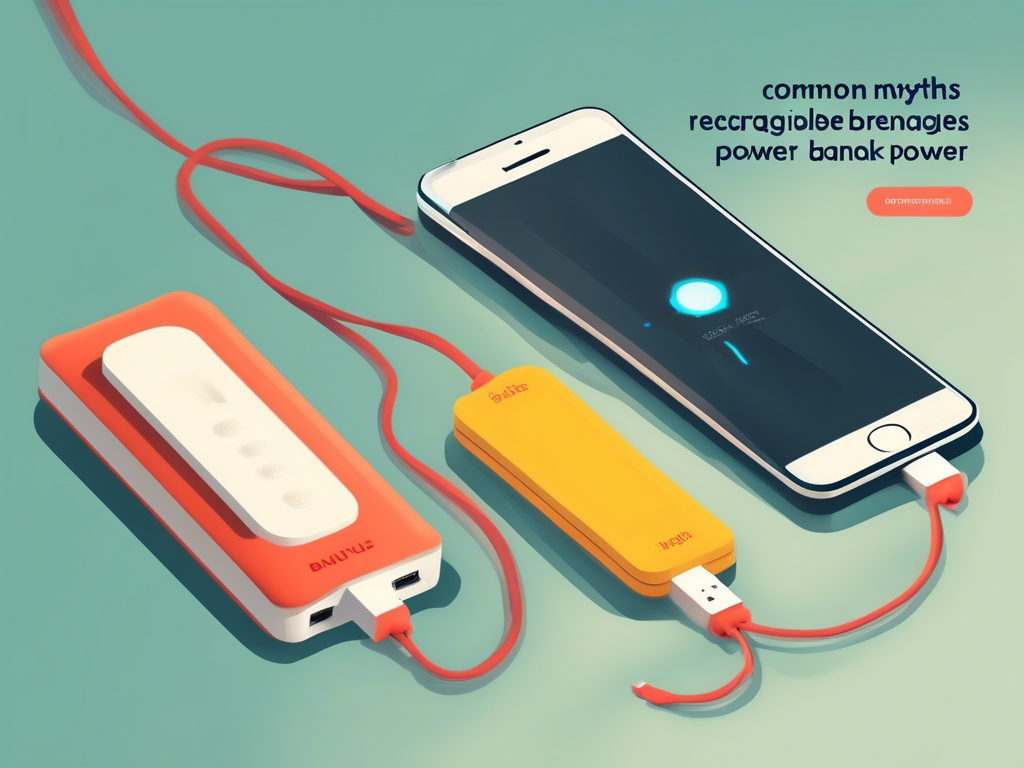
Myth 1: All Power Banks Charge at the Same Speed
One of the most prevalent myths is that all rechargeable phone power banks offer the same charging speed. In reality, charging speeds can vary significantly based on the power bank’s output specifications and supported technologies. Power banks with higher output ratings (measured in amps or watts) will charge devices faster. Additionally, those equipped with fast charging technologies like Quick Charge or Power Delivery can dramatically reduce charging times when paired with compatible devices. ⚡🚀
Myth 2: Higher Capacity Always Means Heavier and Bulkier
While it’s commonly believed that a higher capacity means more weight and size, advancements in technology have made it possible to create rechargeable phone power banks that are both powerful and portable. Brands are designing lightweight materials and compact shapes that maintain high capacities. This means you can find a power bank with **20,000mAh** capacity that fits comfortably in your pocket without feeling cumbersome! 🌍📏
Myth 3: You Can Overcharge a Power Bank
Many users worry about overcharging their rechargeable phone power banks, but modern power banks come equipped with built-in safety features that prevent this issue. Most power banks automatically stop charging once they reach full capacity, protecting the battery from damage. To ensure longevity, however, it’s still advisable to unplug the charger once the power bank is fully charged, but there’s no need to panic—overcharging is largely a myth! 🔒🔋
Myth 4: All Power Banks Are the Same
Not all rechargeable phone power banks are created equal. There’s a vast range of features available, including various output capacities, multiple ports for simultaneous charging, and different types of batteries (like Li-ion vs. Li-Po). When selecting a power bank, it’s crucial to consider what you need most—whether that’s fast charging, portability, or additional safety features. Doing thorough research will help you find the best power bank tailored to your unique requirements. ⚖️💼
Myth 5: Power Banks Don’t Last Long
A common misconception is that rechargeable phone power banks don’t have long lifespans. While it’s true that battery performance may degrade over time, with proper care and maintenance, a quality power bank can last for years. Tips include avoiding extreme temperatures, regularly charging the power bank even when not in use, and using certified cables for charging. With these practices, you can extend the life of your power bank significantly! ⏳✨
By debunking these myths, you can approach your search for the perfect rechargeable phone power bank with more informed choices, ensuring you get the best device to keep your gadgets powered up efficiently!
Maintaining Your Power Bank for Longevity

Keep It at Optimal Temperatures
To prolong the life of your rechargeable phone power bank, it’s essential to keep it within a suitable temperature range. Extreme heat can lead to battery swelling and degradation, while extreme cold can hinder its performance. Ideally, store your power bank in a cool, dry place, away from direct sunlight or heat sources. 🌡️
Regular Charging Practice
Even if you don’t use your rechargeable power bank frequently, it’s vital to charge it every few months. This keeps the battery from going into deep discharge, which can cause capacity loss. Aim to recharge your power bank to about 50% if it’s going to be stored for an extended period. Regular maintenance helps ensure it’s ready when you need it! 🔋✨
Choosing Quality Accessories
Using the correct cables and chargers is crucial for your power bank’s longevity. Always opt for high-quality, manufacturer-recommended charging cables. Low-quality or incompatible accessories may damage the power bank or lead to inefficient charging. A good rule of thumb is to avoid using random chargers lying around and invest in certified ones. 🛡️🔌
Clean and Inspect Regularly
Dust and debris can accumulate in the ports of your rechargeable phone power bank, which may affect charging efficiency. Regularly check and clean the ports with a soft, dry cloth. Avoid using liquid cleaners, as moisture can damage electronic components. Additionally, inspect the power bank for any signs of wear or damage, addressing any issues before they worsen. 🔍🧼
Avoid Overusing High-Capacity Charging
While it may be tempting to use your rechargeable power bank continuously for multiple devices, excessive use can strain its battery. Prioritize charging one device at a time or moderate the number of devices charged simultaneously. This approach not only helps preserve the battery life but also ensures efficient and safe charging. ⚖️📱
By following these simple maintenance tips, you can significantly enhance the longevity and reliability of your rechargeable phone power bank, keeping your devices powered wherever you go! 🔋🌟
The Future of Rechargeable Power Banks: Trends to Watch
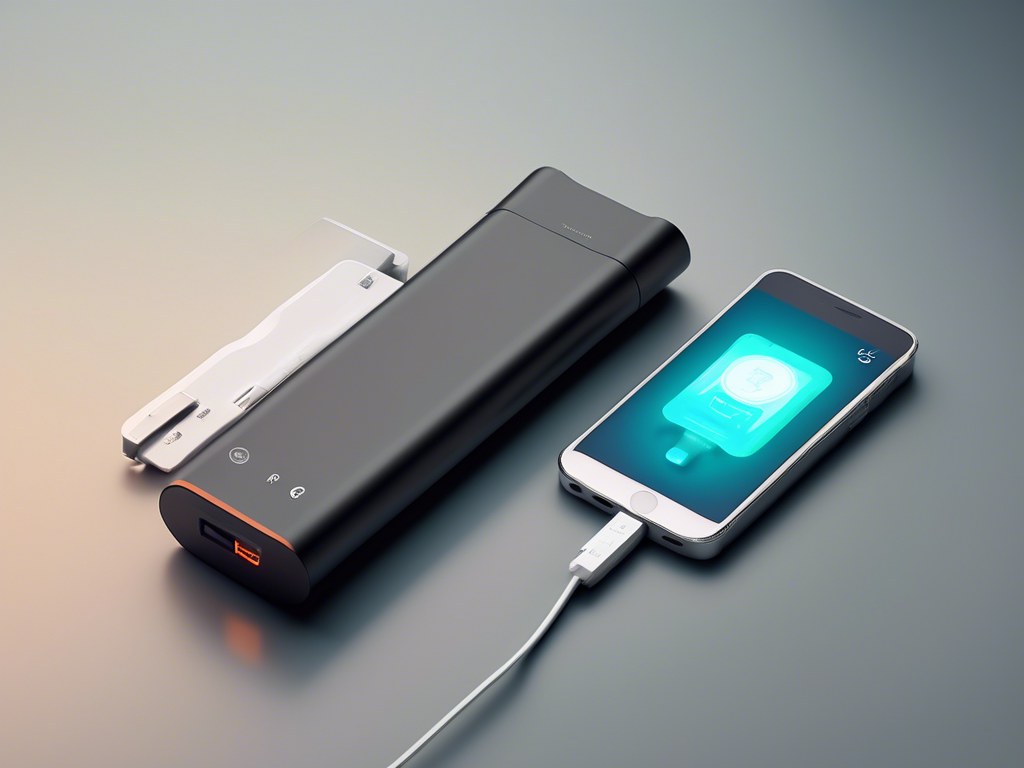
Innovations in Battery Technology
The world of rechargeable power banks is set to witness significant advancements in battery technology. Manufacturers are increasingly exploring options such as solid-state batteries, which promise higher energy densities, faster charging times, and improved safety over conventional lithium-ion batteries. This could lead to rechargeable phone power banks that are not only lighter but also offer greater longevity and efficiency, making your charging experience even better! 🔋✨
Sustainability Efforts
Sustainability has become a focal point for many industries, and the power bank sector is no exception. As eco-conscious consumers demand greener products, manufacturers are investing in sustainable materials and recycling programs. Expect to see more rechargeable phone power banks made from recycled materials or designed to be easily disassembled for proper recycling. This movement towards greener solutions aims to reduce waste and promote environmental responsibility. 🌍♻️
Smart Features and Connectivity
As smart technology continues to evolve, so will the capabilities of rechargeable phone power banks. Future models may incorporate advanced features such as Bluetooth connectivity, allowing users to monitor battery levels through apps, track charging statistics, and receive alerts when the power bank is low on charge. Additionally, built-in solar panels and wireless charging capabilities are gaining traction, providing users with versatile charging options tailored to their lifestyles! 📱⚡
Enhanced Fast Charging Technologies
Fast charging has become a necessity for many users, and this trend will only amplify in the future. New standards for fast charging, such as GaN (Gallium Nitride) technology, are being developed to allow for safer and more efficient energy transfer. Anticipate a rise in rechargeable phone power banks that support multiple fast charging protocols, enabling users to enjoy quicker charging speeds for a variety of devices simultaneously. ⏩🔌
Design Innovations
The design of power banks will shift towards sleeker, more user-friendly forms as consumer preferences change. Expect to see ergonomic designs that enhance portability without sacrificing capacity. Manufacturers will focus on aesthetics alongside functionality, producing rechargeable phone power banks in diverse styles and colors to appeal to various demographics. This means you can charge your devices while flaunting a stylish accessory! 🌟✨
Integration with Other Devices
We are likely to see an increase in integrations among devices, where rechargeable phone power banks can interact seamlessly with other gadgets. Imagine a scenario where your power bank can automatically charge your smartwatch when you’re not using it, or act as a hub for connecting multiple devices wirelessly. This interconnectivity will provide enhanced convenience, tailored to our ever-demanding tech-savvy lifestyle. 🤖💼
With these emerging trends, the future of rechargeable power banks promises to be innovative, efficient, and environmentally friendly, providing users with even more reason to stay charged and connected! 🔋🌍
Summing up
In conclusion, understanding the various facets of rechargeable power banks is crucial for anyone who relies on their devices for daily communication, work, or leisure. From grasping the basic features that enhance usability to discerning between different battery types like lithium-ion and Li-Po, the information covered in this article lays a solid foundation for making knowledgeable purchases. We’ve also highlighted the importance of selecting the appropriate capacity and emphasized how portability plays a pivotal role in user convenience.
Moreover, by debunking several common myths surrounding rechargeable phone power banks, we have clarified misconceptions that may prevent users from maximizing their potential benefits. Proper maintenance practices discussed here will not only extend the lifespan of your power bank but also optimize its performance. As we look toward the future, staying abreast of emerging trends will ensure you remain informed and prepared for the next innovations in mobile technology.
In a fast-paced world where downtime is not an option, investing in a reliable rechargeable power bank is more than just a convenience; it’s a necessity. Whether you’re a casual user or a tech-savvy individual, having the right power bank can keep your devices running smoothly when it matters most. Don’t wait until you’re caught without a charge; take charge of your mobile experience today and explore the vast array of options available in the market!



